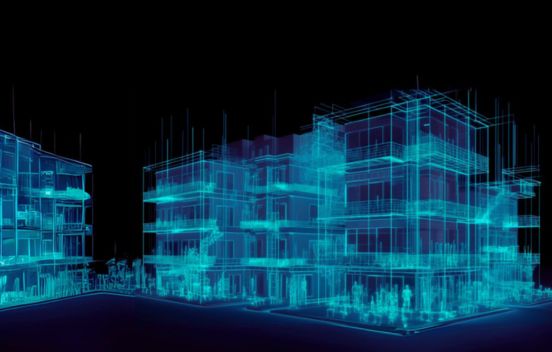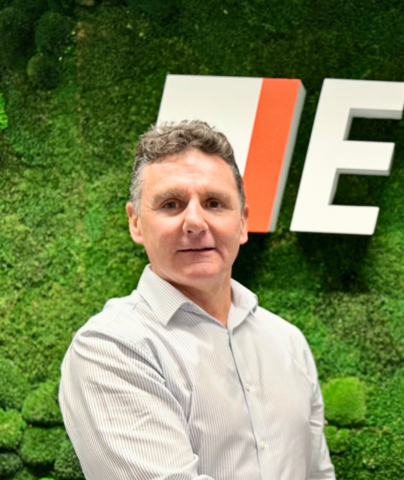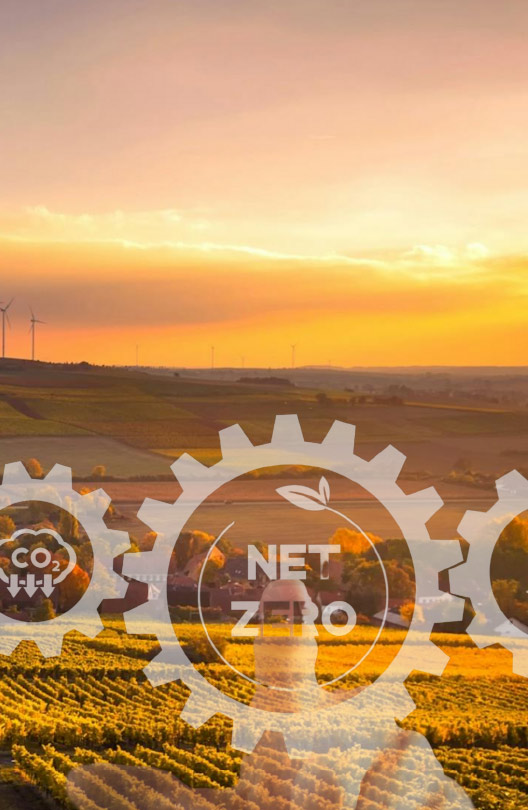THIS ARTICLE AT A GLANCE
CONTACT ETS
If you have any questions or would like to discuss further what you should be doing, ETS is here and willing to help.
Call 0117 205 0542
Email enquiries@energy-ts.com
Submit a contact form
CHECK OUR SERVICES
The Link Between Energy Efficiency and the Well Agenda

Historically the energy management agenda has largely used the idea of financial cost saving as the principal driver in promoting buy-in and the uptake of efficiency projects, across all sectors. Additionally, over the last 15 years, the market across all sectors became increasingly attuned to the idea of environmental performance – both as a response to an increasingly onerous legislative landscape around carbon performance of built assets, but also as many companies’ internal and external stakeholders placed greater scrutiny on sustainability and the actions being taken by firms to manage their environmental impact across all areas of their operations.
Increasingly over the past few years the ‘Well Agenda’ has become a significant consideration in its own right, with many funding bodies, institutional investment houses, and corporate occupiers requiring high levels of performance against specific assessment methodologies aimed directly at occupant wellbeing – thinking specifically of the ‘WELL’ Standard as developed by the International WELL Building Institute (IWBI)
Wellbeing, as much as energy efficiency and carbon reduction, is becoming a key criterion against which a building’s quality is judged. We spend over 90% of our lives in and around buildings, where the concepts of sustainability and environmental impact are widely understood and measured. Now, consideration of buildings’ impact on occupants’ wellbeing – and productivity and absenteeism levels – is advancing. This is not surprising, given 90% of operating expenses typically goes to staff costs and 90% of people say their attitude to work is adversely affected by the quality of their workplace environment.
The Wellness agenda promotes clean air and minimising sources of indoor air pollution, safe and clean water (in recognition of how quickly dehydration is detrimental to human performance), the availability of fresh, nutritious foods and encouraging healthy eating habits, it promotes fitness, through the integration of physical activity into everyday life by providing opportunities for physical activity, such as moving away from prolonged periods of sitting at desks and taking the stairs rather than the lift. The mind element incorporates optimising design, technology, and crowding, noise, indoor air quality and light for the best emotional health. Importantly comfort, including thermal, acoustic, ergonomic and olfactory comfort to optimise the indoor environment, and hence wellbeing and productivity
What is the main link between energy efficiency and the wellness agenda?
The idea of Health & Wellbeing of building occupants is not new, and has always been of importance, ever since the identification of problems including ‘Sick Building Syndrome’ – and increasingly gained further traction as part of the wider environmental performance piece through specific inclusion in building sustainability assessment methodologies such as BREEAM and LEED.
There has always been a debate in the UK market as to whether a buildings’ higher sustainability credentials (as defined by a BREEAM ‘Excellent’ rating for example) drives higher capital and / or rental values, or that higher value buildings are inherently more sustainable due to often stricter requirements being placed on their performance by planning authorities etc. To date it has appeared to many that the traditional drivers of value remain dominant, especially in more complex markets such as the UK with a wide variety of stock ages.
Sound energy management has always formed a significant part of the Health & Wellbeing agenda, but the significance of the interrelationship has not always been fully appreciated. Deep insight into the performance and calibration of building control systems, and the strategies to which they operate, often undertaken by energy management engineers, is one of the key components in ensuring healthy internal comfort levels – whilst also driving financial savings through improved energy efficiency.
Furthermore, sound building services engineering, including ensuring that PPM regimes are adhered to, is the very bedrock of enabling buildings to deliver the internal conditions that facilitate occupant comfort, productivity and wellbeing.
This is why, at ETS we have always considered the performance of the installed equipment alongside its energy optimisation and the maintenance activities as they have a massive combined effect of occupant wellbeing. This has almost been seen as a soft benefit of our services but is now gaining recognition in its own right.
What are the upcoming trends in energy efficiency and wellness?
As focus increasingly shifts on to the Wellness agenda, evidence is emerging that improving the credentials of buildings, can drive a positive ROI through reduced sick days of staff, higher levels of individual productivity, better staff retention etc – and that as this message resonates with the occupiers more and more, property values may well respond positively.
What might this look like in practice? Measures might typically include improved access to daylight, better acoustical design to help improve concentration and increased ventilation to help employees be more comfortable year-round. Also, vending machines are replaced with access to healthy snacks, biophilic design is considered to bring nature indoors, and sit/stand desks are introduced to help employees achieve better comfort.
The big question is whether it is worth the investment. Early evidence from the first WELL certified office projects in the United States suggests it is. Costs have varied considerably, with the biggest expenses in acoustics (reducing noise in an open office), enhanced HVAC filtration and zone control (cleaner indoor air). Advocates say that the benefits are highlighted by improved absenteeism and higher productivity figures. This is important considering the annual absenteeism rate in the US is 3% per employee in the private sector. Research has shown that offices with good ventilation and air quality can improve cognitive function significantly, whilst other recent studies have found that improving thermal comfort and access to daylight can significantly increase employee satisfaction, and for most businesses a 1% improvement in an individual’s productivity is worth far more to the bottom line than original fit out costs.
What is next?
There is some scepticism of the measurement of, and correlation between, productivity and wellbeing. Yet it is beyond doubt that lighting, air quality, noise, thermal comfort, design layout, and even the access to nature, have a huge impact on how people feel in the workplace. Post-occupancy surveys provide subjective measurements, while technology, that you can monitor through a buildings Building Management System (BMS), is readily available that delivers objective measurements such as daylight, staff movement and air quality.
The WELL standard aligns with BREEAM certification: The International WELL Building Institute (IWBI) and BRE have published guidance on where the same evidence can be used to make it more efficient for clients and project teams to pursue dual certification, with the aim of saving time and costs. So far there is no indication that it alters the timeline of projects. Similar guidance has also been published for teams seeking Leadership in Energy and Environmental Design (LEED) certification too. The Chartered Institute of Building Engineers are also launching TM40: Health and wellbeing in building services, later this month.
It will take time to be able to undertake a full analysis of the impact of “WELL-ready” buildings on increased rents or decreased vacancy rates. Yet building owners who want to attract Class A tenants should consider adopting the wellness agenda, as employers look to differentiate themselves by providing a healthier workplace for their employees, to reduce employee turnover or improve recruitment of talent. A new set of criteria of sustainability should be considered and should involve optimising a complex set of factors, for example, achieving thermal comfort alone the careful balancing of thermal mass, glazing, shading, ventilation, zoning, and building user control. The early initial indications are the returns justify the costs, and developers need to be prepared to respond to this growing market.
At ETS, we have all the skills in-house to ensure your building’s M&E plant is fully up to scratch, and that the Building Management System controlling the interaction of the various pieces of equipment is scoped and optimally tuned, so that the performance of your property can be optimised from a cost and carbon perspective, whilst continually remotely monitoring the parameters set for the building. This will deliver optimal internal comfort conditions to enable your business to keep your teams and other occupants healthy, happy and moreover, productive.
Final thoughts
If you are looking for an energy management system that is tailored to your business needs, ETS can provide you with 25 years of experience in dramatically improving energy efficiency and reducing environmental impacts. Whether your businesses have individual assets or large international portfolios, ETS can assist you in saving substantial amounts of money while significantly reducing your carbon performance.
To discuss your requirements, get in touch. You can contact us by calling 0117 205 0542 or drop us an email at enquiries@energy-ts.com.
Historically the energy management agenda has largely used the idea of financial cost saving as the principal driver in promoting buy-in and the uptake of efficiency projects, across all sectors. Additionally, over the last 15 years, the market across all sectors became increasingly attuned to the idea of environmental performance – both as a response to an increasingly onerous legislative landscape around carbon performance of built assets, but also as many companies’ internal and external stakeholders placed greater scrutiny on sustainability and the actions being taken by firms to manage their environmental impact across all areas of their operations.
Increasingly over the past few years the ‘Well Agenda’ has become a significant consideration in its own right, with many funding bodies, institutional investment houses, and corporate occupiers requiring high levels of performance against specific assessment methodologies aimed directly at occupant wellbeing – thinking specifically of the ‘WELL’ Standard as developed by the International WELL Building Institute (IWBI)
Wellbeing, as much as energy efficiency and carbon reduction, is becoming a key criterion against which a building’s quality is judged. We spend over 90% of our lives in and around buildings, where the concepts of sustainability and environmental impact are widely understood and measured. Now, consideration of buildings’ impact on occupants’ wellbeing – and productivity and absenteeism levels – is advancing. This is not surprising, given 90% of operating expenses typically goes to staff costs and 90% of people say their attitude to work is adversely affected by the quality of their workplace environment.
The Wellness agenda promotes clean air and minimising sources of indoor air pollution, safe and clean water (in recognition of how quickly dehydration is detrimental to human performance), the availability of fresh, nutritious foods and encouraging healthy eating habits, it promotes fitness, through the integration of physical activity into everyday life by providing opportunities for physical activity, such as moving away from prolonged periods of sitting at desks and taking the stairs rather than the lift. The mind element incorporates optimising design, technology, and crowding, noise, indoor air quality and light for the best emotional health. Importantly comfort, including thermal, acoustic, ergonomic and olfactory comfort to optimise the indoor environment, and hence wellbeing and productivity
What is the main link between energy efficiency and the wellness agenda?
The idea of Health & Wellbeing of building occupants is not new, and has always been of importance, ever since the identification of problems including ‘Sick Building Syndrome’ – and increasingly gained further traction as part of the wider environmental performance piece through specific inclusion in building sustainability assessment methodologies such as BREEAM and LEED.
There has always been a debate in the UK market as to whether a buildings’ higher sustainability credentials (as defined by a BREEAM ‘Excellent’ rating for example) drives higher capital and / or rental values, or that higher value buildings are inherently more sustainable due to often stricter requirements being placed on their performance by planning authorities etc. To date it has appeared to many that the traditional drivers of value remain dominant, especially in more complex markets such as the UK with a wide variety of stock ages.
Sound energy management has always formed a significant part of the Health & Wellbeing agenda, but the significance of the interrelationship has not always been fully appreciated. Deep insight into the performance and calibration of building control systems, and the strategies to which they operate, often undertaken by energy management engineers, is one of the key components in ensuring healthy internal comfort levels – whilst also driving financial savings through improved energy efficiency.
Furthermore, sound building services engineering, including ensuring that PPM regimes are adhered to, is the very bedrock of enabling buildings to deliver the internal conditions that facilitate occupant comfort, productivity and wellbeing.
This is why, at ETS we have always considered the performance of the installed equipment alongside its energy optimisation and the maintenance activities as they have a massive combined effect of occupant wellbeing. This has almost been seen as a soft benefit of our services but is now gaining recognition in its own right.
What are the upcoming trends in energy efficiency and wellness?
As focus increasingly shifts on to the Wellness agenda, evidence is emerging that improving the credentials of buildings, can drive a positive ROI through reduced sick days of staff, higher levels of individual productivity, better staff retention etc – and that as this message resonates with the occupiers more and more, property values may well respond positively.
What might this look like in practice? Measures might typically include improved access to daylight, better acoustical design to help improve concentration and increased ventilation to help employees be more comfortable year-round. Also, vending machines are replaced with access to healthy snacks, biophilic design is considered to bring nature indoors, and sit/stand desks are introduced to help employees achieve better comfort.
The big question is whether it is worth the investment. Early evidence from the first WELL certified office projects in the United States suggests it is. Costs have varied considerably, with the biggest expenses in acoustics (reducing noise in an open office), enhanced HVAC filtration and zone control (cleaner indoor air). Advocates say that the benefits are highlighted by improved absenteeism and higher productivity figures. This is important considering the annual absenteeism rate in the US is 3% per employee in the private sector. Research has shown that offices with good ventilation and air quality can improve cognitive function significantly, whilst other recent studies have found that improving thermal comfort and access to daylight can significantly increase employee satisfaction, and for most businesses a 1% improvement in an individual’s productivity is worth far more to the bottom line than original fit out costs.
What is next?
There is some scepticism of the measurement of, and correlation between, productivity and wellbeing. Yet it is beyond doubt that lighting, air quality, noise, thermal comfort, design layout, and even the access to nature, have a huge impact on how people feel in the workplace. Post-occupancy surveys provide subjective measurements, while technology, that you can monitor through a buildings Building Management System (BMS), is readily available that delivers objective measurements such as daylight, staff movement and air quality.
The WELL standard aligns with BREEAM certification: The International WELL Building Institute (IWBI) and BRE have published guidance on where the same evidence can be used to make it more efficient for clients and project teams to pursue dual certification, with the aim of saving time and costs. So far there is no indication that it alters the timeline of projects. Similar guidance has also been published for teams seeking Leadership in Energy and Environmental Design (LEED) certification too. The Chartered Institute of Building Engineers are also launching TM40: Health and wellbeing in building services, later this month.
It will take time to be able to undertake a full analysis of the impact of “WELL-ready” buildings on increased rents or decreased vacancy rates. Yet building owners who want to attract Class A tenants should consider adopting the wellness agenda, as employers look to differentiate themselves by providing a healthier workplace for their employees, to reduce employee turnover or improve recruitment of talent. A new set of criteria of sustainability should be considered and should involve optimising a complex set of factors, for example, achieving thermal comfort alone the careful balancing of thermal mass, glazing, shading, ventilation, zoning, and building user control. The early initial indications are the returns justify the costs, and developers need to be prepared to respond to this growing market.
At ETS, we have all the skills in-house to ensure your building’s M&E plant is fully up to scratch, and that the Building Management System controlling the interaction of the various pieces of equipment is scoped and optimally tuned, so that the performance of your property can be optimised from a cost and carbon perspective, whilst continually remotely monitoring the parameters set for the building. This will deliver optimal internal comfort conditions to enable your business to keep your teams and other occupants healthy, happy and moreover, productive.
For further information please get in touch with our expert team by calling 0117 205 0545 or email enquiries@energy-ts.com.
















































































